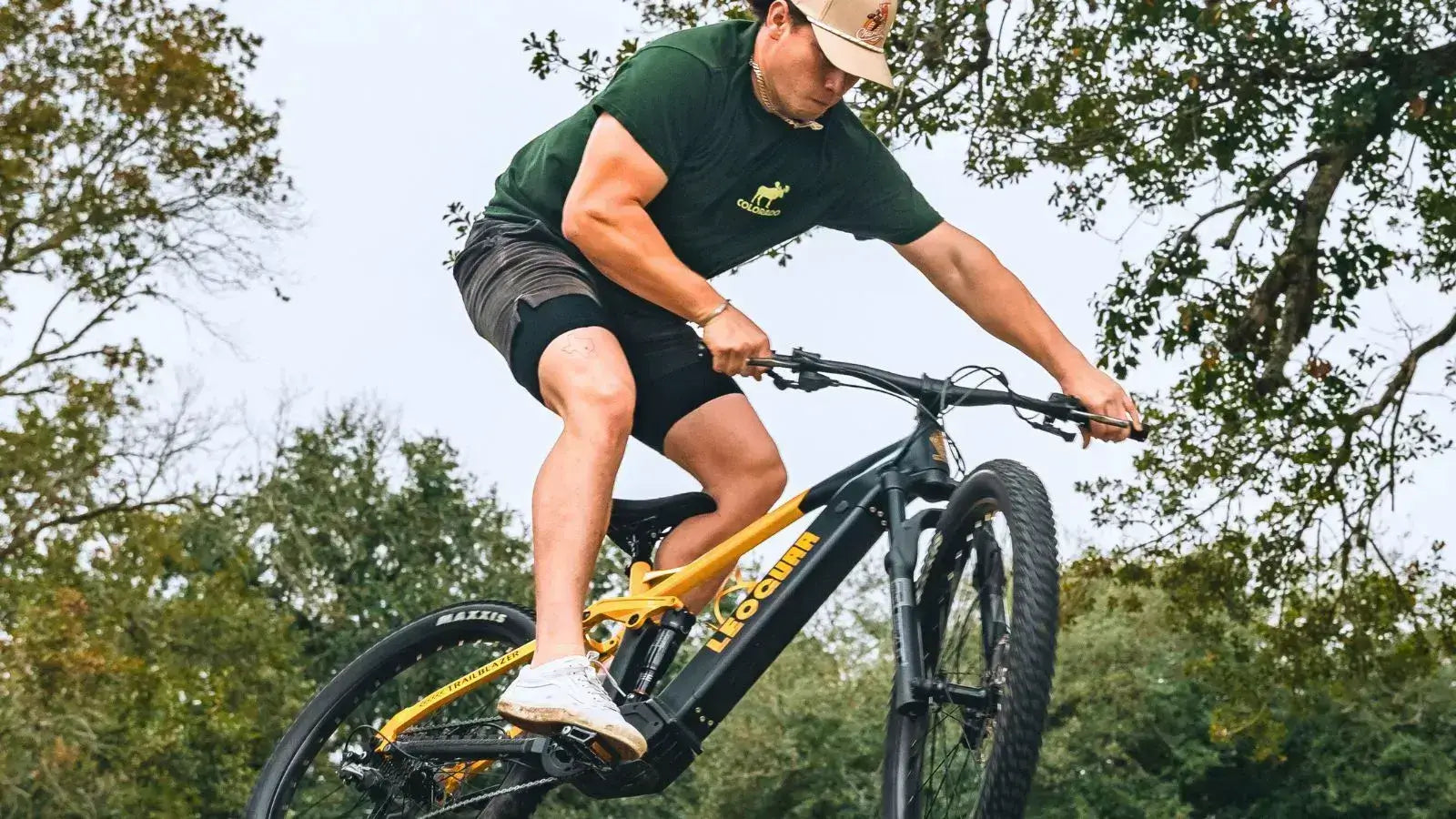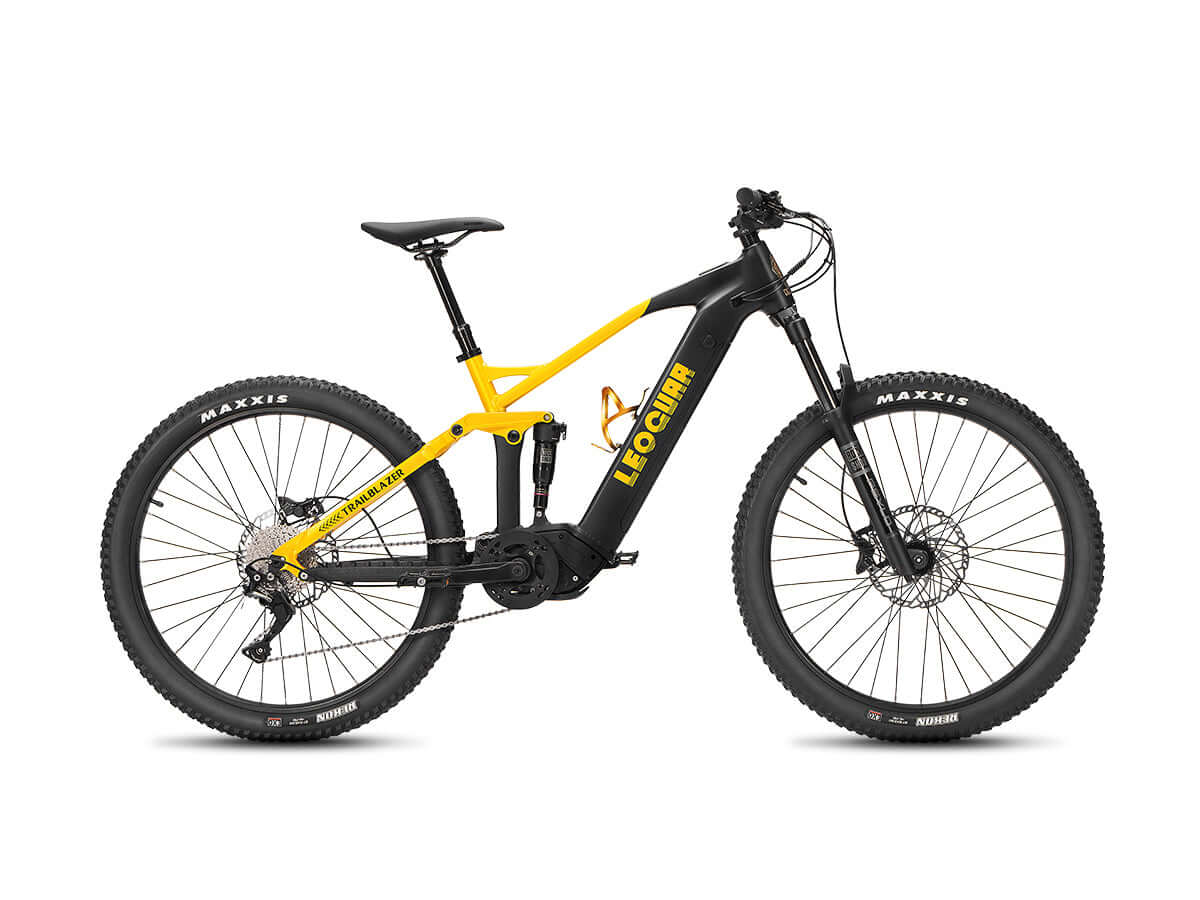
Fast Ebike Truth: Speed, Safety & Legal Limits Guide
The search for a fast e-bike starts with one exciting idea: speed. You see numbers like 28 mph, 40 mph, and even 60+ mph and think about how your daily ride to work could change or how much more fun your weekend trips could be. This excitement drives people to want high-performance electric bikes. But this thrilling ability comes with confusing laws and real physical dangers. The line between a "fast e-bike" and an unlicensed motorcycle gets blurry, and crossing it can lead to serious problems. We're here to cut through the marketing tricks and give you the honest truth. This guide breaks down what it really means to own and ride a fast electric bike, focusing on the important balance between speed, safety, and following the law.
Understanding E-Bike Laws
In the eyes of the law, not all electric bikes are the same. To handle the growing number of e-bikes on public roads and trails, the United States has widely used a three-class system. Understanding this system is the first and most important step for any future rider. It decides where you can ride, whether you need a license, and what counts as "street legal." These groups, as explained by sources like The New York Times Wirecutter review on Class 1, 2, and 3 e-bikes, are based on motor help speed and whether the bike has a throttle.
Here is a simple breakdown of the standard e-bike classification system:
| Class | Motor Assistance | Top Assisted Speed | Throttle? |
|---|---|---|---|
| Class 1 | Pedal-Assist Only | 20 mph | No |
| Class 2 | Pedal-Assist & Throttle | 20 mph | Yes |
| Class 3 | Pedal-Assist Only | 28 mph | No |
Anything that gives motor help beyond 28 mph is usually not considered a street-legal bicycle. These high-power machines often fall into a different legal group, such as a moped, motor-driven cycle, or motorcycle. This change usually requires a driver's license with a motorcycle endorsement, vehicle registration, and insurance. While this three-class system gives a federal baseline, rules can change a lot between states, counties, and even cities. It is important to check your local rules. A great resource for this is the complete guide to state-by-state e-bike laws put together by PeopleForBikes.
High-Power E-Bike Tech
Many bikes you find online sold as a fast e-bike can easily go past the legal 28 mph limit. These are often sold with "off-road only" warnings and represent a big step up in performance and technology from their street-legal counterparts. Understanding what powers these machines helps explain their intended use and the risks involved. Two key technical specs drive their extreme speed: motor wattage and battery voltage.
Motor Wattage (W): A standard street-legal e-bike in the US typically has a 750W motor. High-power bikes, however, can feature motors rated at 2000W, 5000W, or even more. While higher wattage helps with higher top speed, its main effect is on torque—the rotational force that translates to acceleration. This is why these bikes feel incredibly quick off the line.
Battery Voltage (V): Voltage is the electrical pressure that pushes power from the battery to the motor. While a standard e-bike might use a 48V system, high-performance models use 72V or higher. A higher voltage system allows more power to be delivered to the motor more efficiently, enabling it to spin faster and achieve higher road speeds.
These parts create bikes that blur the line with electric motorcycles. It's not uncommon to see "power bikes" from brands like Wired or Juiced advertised with top speeds of 40-50 mph, while extreme models like the Hallomotor FC-1 claim to reach over 60 mph. These are not bicycles in a legal or practical sense and are not designed for use on public roads or bike paths.
High-Speed Riding Risks
With great power comes serious responsibility. The thrill of riding a fast e-bike at speeds of 30, 40, or 50 mph is undeniable, but it comes with a scary increase in risk that many riders don't understand until it's too late. Understanding the physics of speed is not optional; it's needed for survival. The basic advice to "wear a helmet" is dangerously not enough when dealing with this level of performance.
First, consider the physics of a crash. The kinetic energy an object carries is related to the square of its speed. This means a crash at 40 mph is not twice as bad as one at 20 mph—the impact forces are four times greater. At 60 mph, the impact is nine times more severe. A bicycle frame and a human body are simply not designed to handle such forces. As the latest data on cyclist safety from the IIHS shows, cyclists are incredibly vulnerable even at traditional speeds; these risks are multiplied exponentially on a fast e-bike.
From our experience as riders, one of the most terrifying and least-discussed dangers is the "speed wobble." This is a violent shaking of the handlebars that can begin suddenly at high speeds, making the bike nearly impossible to control. It's often caused by a combination of factors, including frame geometry not engineered for high velocity, improper rider weight distribution, or a slightly loose headset. On a machine that weighs 100 pounds or more, a speed wobble can throw you from the bike with catastrophic results.
Finally, the core parts of the bike itself become failure points. Standard bicycle brakes, even mechanical disc brakes, are not designed to handle the massive heat generated when stopping a heavy, fast-moving e-bike. They can overheat and fail completely, a condition known as brake fade. Likewise, standard bicycle tires are not rated for speeds over 40 mph. A tire blowout at that velocity is a catastrophic event that almost guarantees a severe crash.
Essential Safety Gear
Your protective gear must match your potential speed. Riding a 40 mph e-bike with a standard bicycle helmet is like driving a race car with a seatbelt from a 1970s sedan—it offers a false sense of security. We have structured our safety gear recommendations into a tiered system. As your speed capability increases, your investment in personal protection must increase with it.
Level 1: For Class 1-3 Riding (Up to 28 mph)
- Helmet: A high-quality, certified bicycle helmet is the bare minimum. Look for the CPSC (Consumer Product Safety Commission) sticker inside.
- Visibility: Bright, daytime-visible front and rear lights and reflective elements on clothing are crucial for being seen by motorists.
- Gloves: Standard cycling gloves improve grip and offer minor protection against scrapes in a low-speed fall.
Level 2: For High-Speed Riding (28 mph - 40 mph)
- Helmet: This is a mandatory upgrade. A standard bicycle helmet is no longer sufficient. You need a full-face helmet to protect your chin, face, and teeth. Look for certifications like ASTM F1952 (for downhill mountain biking) or a lightweight DOT-rated (Department of Transportation) motorcycle helmet.
- Eye Protection: Wind and debris become serious hazards at these speeds. Shatter-proof goggles or a helmet with a full-face shield are essential.
- Body Armor: A fall at this speed will cause significant injury. We strongly recommend an armored jacket with built-in elbow and shoulder protection, along with abrasion-resistant pants, often reinforced with Kevlar.
- Gloves: Upgrade to armored, full-finger gloves designed for motorcycling to protect the bones in your hands.
Level 3: For Extreme Speeds (40+ mph)
- Full Motorcycle Gear: At these speeds, you are operating a motorcycle, regardless of whether it has pedals. Your safety gear must reflect this reality. This means a complete set of DOT-rated motorcycle gear: full-face helmet, armored jacket, dedicated riding pants or overpants, over-the-ankle boots, and armored gloves. There is no longer a distinction between your safety needs and those of a motorcyclist.
Remember that even with the best gear, visibility and awareness are paramount. Following fundamental bicycle safety guidelines from the NHTSA, such as riding predictably and scanning for hazards, becomes even more critical at speed.
Finding Your Right Bike
Before you purchase the fastest e-bike you can find, it's crucial to conduct an honest self-assessment. The right bike for you is not necessarily the one with the highest top speed, but the one that best fits your actual use case, riding environment, and personal commitment to safety. Ask yourself these questions:
What is your primary use case? If you are commuting on protected bike lanes and city streets, a reliable and legal Class 3 e-bike that assists up to 28 mph is a perfect, efficient tool. If you are exclusively riding on private land or dedicated off-road trails, a high-power, full-suspension model makes sense. If your goal is to keep up with 45 mph traffic, you are no longer looking for an e-bike; you are looking for a vehicle that requires licensing and insurance.

Where will you be riding? Your environment dictates the legal and practical choice. A 40 mph machine is illegal and irresponsible on a multi-use path shared with pedestrians and other cyclists.
What is your true risk tolerance? Be honest with yourself. Are you prepared for the physical consequences of a high-speed crash? The potential for life-altering injury is very real.
What is your budget for safety gear? As outlined, the cost of appropriate gear for a high-speed machine can be significant, easily adding $500 to $1,000+ to your initial investment. Factoring this in is non-negotiable.
Consider two common rider profiles. The "Speedy Commuter" needs a dependable, safe, and legal way to get around town faster. For them, a Class 3 e-bike is the ideal solution, providing a significant speed advantage over a traditional bike while remaining within a manageable and legal framework. The "Off-Road Enthusiast," on the other hand, seeks maximum power for tackling steep, private trails. For this rider, a high-wattage, "unlocked" fast e-bike is a specialized tool for a specific environment, used far away from public roads and paired with full protective gear. By identifying which profile you more closely resemble, you can make a smarter, safer, and ultimately more satisfying choice.
Frequently Asked Questions
Q: What's the fastest legal e-bike I can ride on public roads?
A: The fastest legal e-bike for public roads is a Class 3 e-bike, which provides motor assistance up to 28 mph. Anything faster than this typically requires licensing, registration, and insurance as a motorcycle or moped.
Q: Do I need a license to ride a fast e-bike?
A: For Class 1, 2, and 3 e-bikes (up to 28 mph), you typically don't need a license in most states. However, any e-bike that goes faster than 28 mph with motor assistance usually requires a motorcycle license, registration, and insurance.
Q: Can I modify my e-bike to go faster than the legal limit?
A: While it's technically possible to modify many e-bikes, doing so makes them illegal for public road use and voids warranties. Modified e-bikes that exceed 28 mph fall into motorcycle categories and require proper licensing and registration.
Q: What safety gear do I really need for a 40+ mph e-bike?
A: For speeds over 40 mph, you need full motorcycle-grade safety gear including a DOT-rated full-face helmet, armored jacket, protective pants, over-the-ankle boots, and armored gloves. Standard bicycle helmets are not sufficient at these speeds.
Q: Where can I legally ride a high-speed e-bike that goes over 28 mph?
A: High-speed e-bikes that exceed 28 mph can typically only be ridden legally on private property, designated off-road trails that allow motorized vehicles, or public roads if properly licensed and registered as motorcycles or mopeds according to local laws.







































Leave a comment